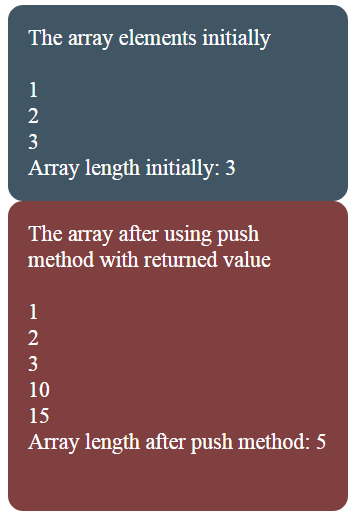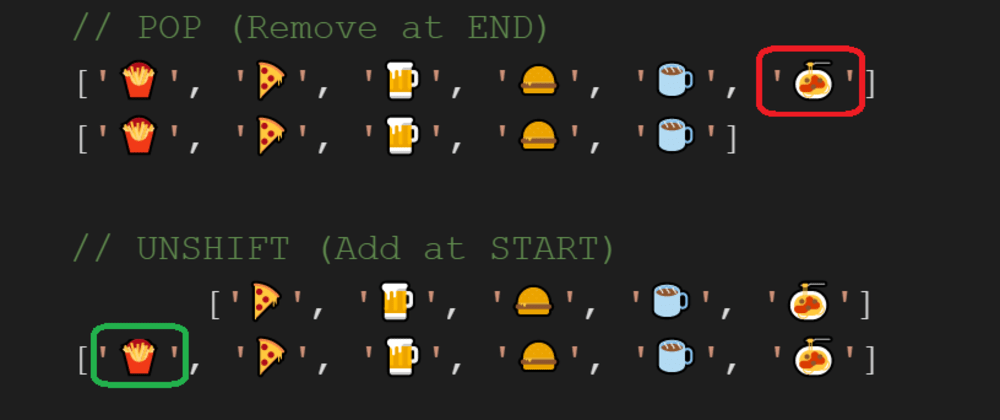

It would just be slower.Īctually, if you grab an early copy of the Mozilla source code from 20 years ago, you’ll find that arrays were backed by ordinary JS objects without much optimization, just some extra code to handle special cases like the `length` property. A naive implementation of JavaScript’s Array object could be backed by a linked list, and it would still work the same way it does now. Some other things to keep in mind: if you have an array that only contains integers, and you push a floating point number or other type into it, it will be ‘downgraded’ for the rest of its life, even if you purge the non integers from it.Īlso keep in mind that none of these implementation details are guaranteed. Lots of builtin functions like push, pop, shift, unshift, and concat do different things depending on the array’s density and what kind of elements it contains.

DICTIONARY_ELEMENTS – a very sparse array that is backed by a dictionaryĪnd you’ll see that it always tries to do whatever will be fastest for the array it is operating on.HOLEY_DOUBLE_ELEMENTS – a sparse double array.HOLEY_SMI_ELEMENTS – a sparse integer array.PACKED_ELEMENTS – a packed object array.PACKED_DOUBLE_ELEMENTS – a packed double array.PACKED_SMI_ELEMENTS – a packed integer array.You’ll notice that it often checks the following constants: If you’re interested, you can read through V8’s array implementation in C++ here. Instead, it will be backed by a dictionary/hashtable, and it’ll take longer to both access elements and iterate through the array. If an array is very sparse, it’ll no longer be backed by an array in memory. If you look at V8’s C++ array source (linked below), you’ll see calls to element->is_the_hole(i). If is not too spare, it’ll still be backed by an array, with empty array indices replaced with a ‘hole’ value. This is similar to the implementation of ArrayList in Java or vector in C++.Īll of the above only is only sure to apply if your array is packed, and not sparse – i.e. If you call push() when the backing array is full, it’ll allocate a new, bigger backing array, copy the existing elements over, and then add the new value you pushed. Even though JavaScript itself doesn’t have a concept of ‘integer’ or ‘double’ – it just sees them all as ‘number’, V8 keeps track and makes it so arrays are a bit faster and more memory efficient if you only put integers in them. If the array contains only objects, or a mixture of numbers and objects, it’ll backed by an array of pointers.

If it contains a mixture of integers and floating point values or only floating point values, it’ll be backed by an array of doubles. Typically, the backing array will be bigger than the number of integers it currently contains. In V8, if your array only contains integers, it’ll be backed by a C++ array of integers. Other JavaScript engines, such as Mozilla’s SpiderMonkey and Microsoft’s Chakra will be similar but not identical. I’m going to use the V8 JavaScript engine (used by Chrme and Node.js) as an example. How exactly they are implemented depends on the specific JavaScript interpreter or VM you’re using. But taking a closer look can help you understand performance issues your might run into, so it’s a worthwhile exercise. It’s entirely possible to use JavaScript effectively without digging in to understand how JS arrays are implemented. Not doing this doesn’t mean you’re a bad developer. Most of them, however, haven’t done a deep dive to understand how JS arrays are implemented in native code. Front-end and full-stack developers use JavaScript arrays every day.


 0 kommentar(er)
0 kommentar(er)
